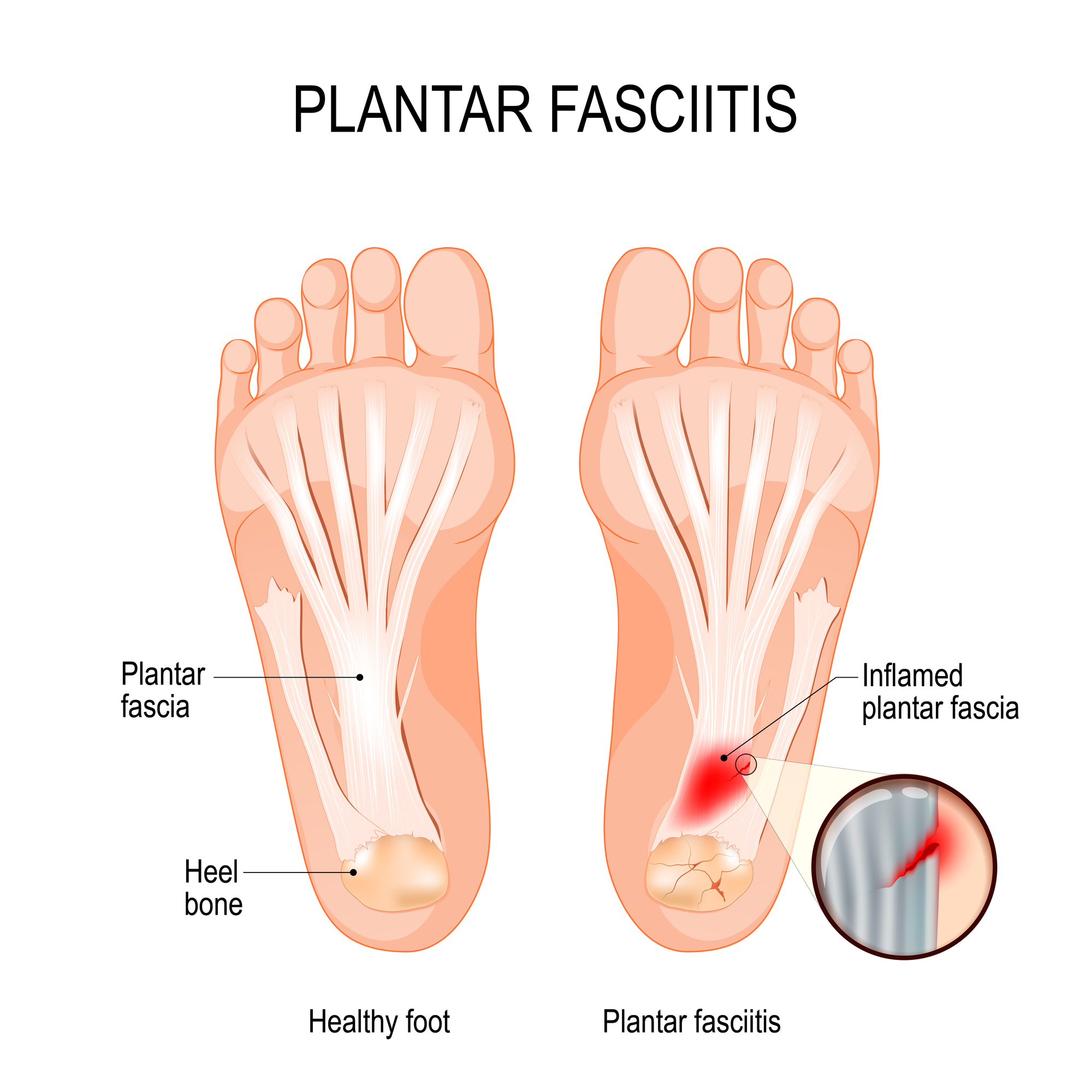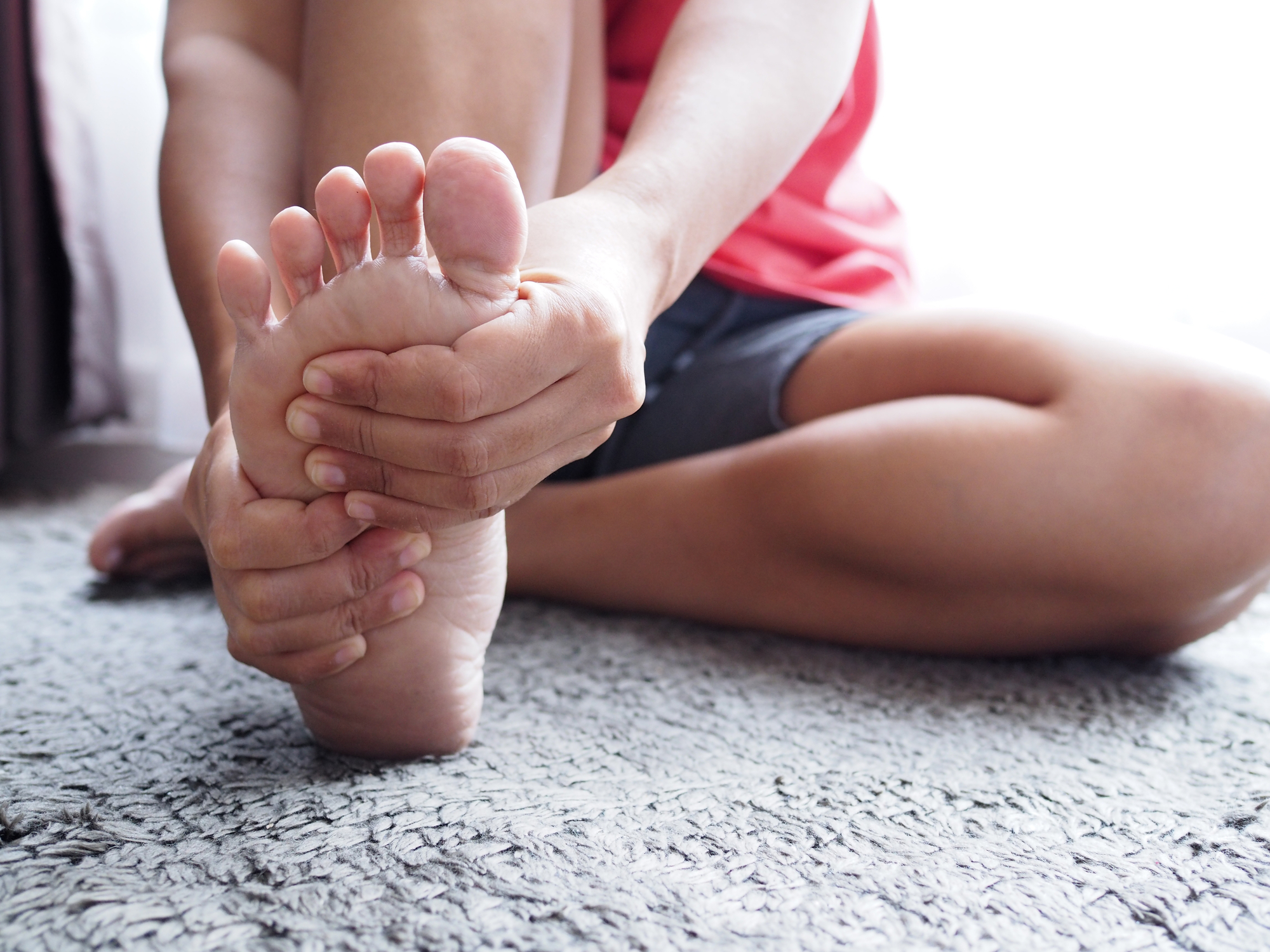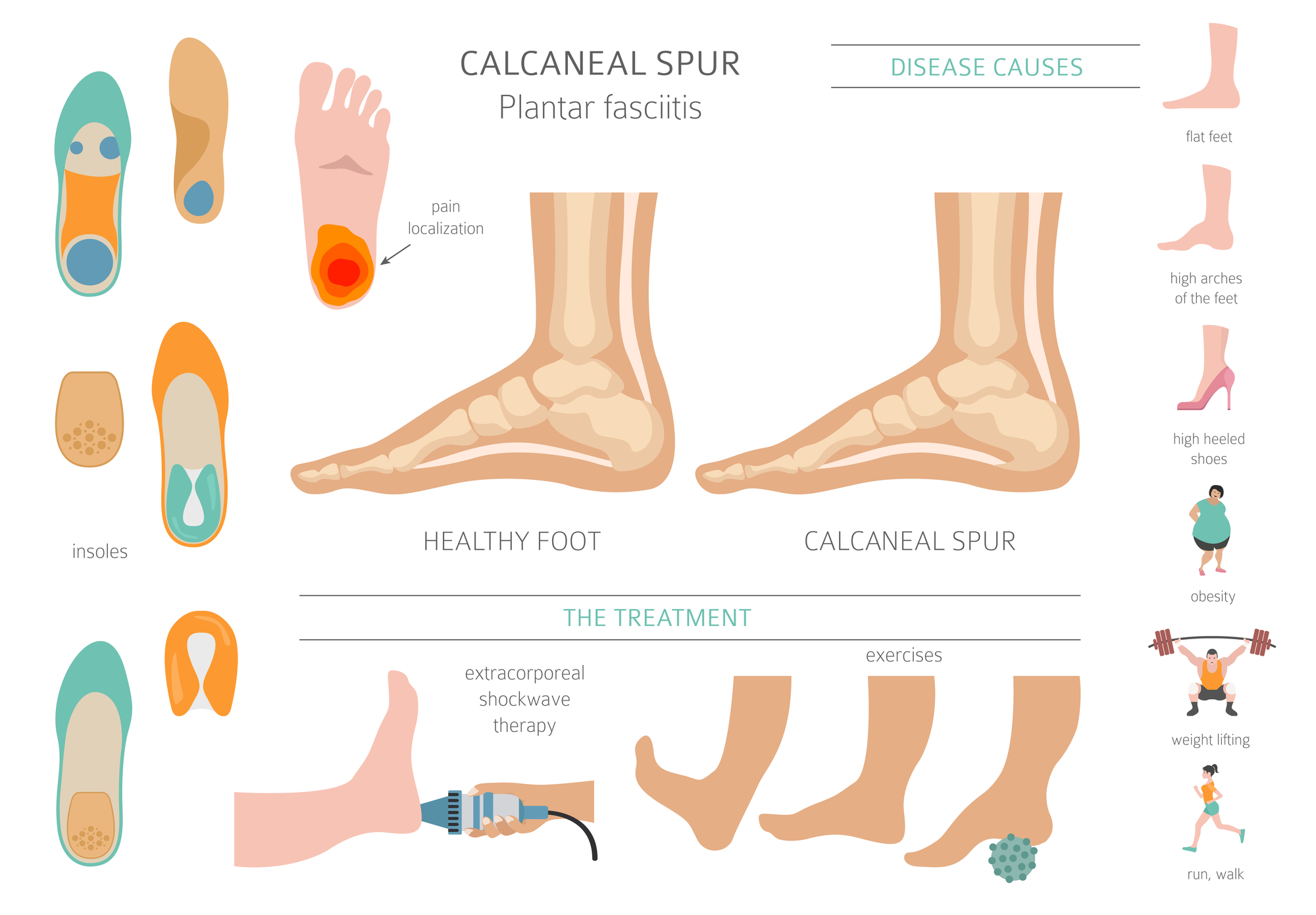Plantar Fasciitis & Treatment Options
Plantar Fasciitis is actually a result of damage to the soft tissue at the bottom of the foot.
What is Plantar Fasciitis?
Plantar fasciitis is a form of repetitive stress injury. In a healthy foot, the foot is able to repair itself at a greater rate than the damage it absorbs. As long as the amount of damage is lower than the body’s ability to heal itself, the foot will remain healthy. The foot pain you feel when you get up in the morning exists because you caused more damage yesterday than your body could heal last night as you slept.
Plantar Fasciitis’s more common name, heel spur, may create the impression of a sharp bony projection on the bottom of the heel that pokes the bottom of our foot causing our pain. Painful Plantar Fasciitis is actually a result of damage to the soft tissue at the bottom of the foot. Plantar fasciitis develops as the result of repeated small tears in the plantar fascia ligament. Normally when you walk, your plantar fascia stretches as your foot strikes the ground. If the plantar fascia is strained by the way you walk or by repeated stress, it can become weak, swollen, and irritated (inflamed), and it can hurt when you stand or walk.

What causes Plantar Fasciitis?
Repetitive activities, such as jobs that require prolonged walking or standing on hard or irregular surfaces or sports such as running are conditions or activities that may lead to plantar fasciitis. Other factors that put extra stress on the feet, such as being overweight or wearing shoes that are poorly cushioned, don’t fit well or are worn out.
Who is more likely to be affected by painful plantar fasciitis?
Plantar fasciitis is most common in middle-aged adults through the natural process of aging. In rare cases, a single injury to the foot can lead to plantar fasciitis. The classic symptom of plantar fasciitis is heel pain when you take your first steps after getting out of bed or after sitting for a long period of time, or pain that gets worse when you climb stairs or stand on your toes.
Have you ever thought about how many steps you take in a day? Most likely this number is in the thousands. With each step, the load of the body weight to be applied to the arch causing the arch to stress. The fascia in the foot goes into tension to resist this force. If this tension in the fascia is greater than the fascia can handle, the fascia is damaged and the area will become inflamed at its insertion into the heel bone or along the arch itself.

Plantar Fasciitis Symptoms
If you currently are suffering from heel pain, one of the first things you should try is to make sure to wear your shoes around the house in the evening and in the morning. The insole in your shoes will help to support the arch of your foot and may help the ligaments to heal on their own. If you walk around barefoot or with just socks on, your arch has to support all your weight by its self.
What does plantar fasciitis feel like?
Treatment Options for Plantar Fasciitis Pain
"When do I need to see a podiatrist for plantar fasciitis pain?"
Treatment of plantar fasciitis must begin with determining if the condition is primary or secondary plantar fasciitis. Primary plantar fasciitis makes up at least 90% of all cases of plantar fasciitis. There are several types of treatment options:

Luckily, Plantar Fasciitis Doesn't Require Surgery
Fortunately for heel pain sufferers, the human body has an amazing ability to heal itself. In order for this to happen with plantar fasciitis, the amount of damage that is caused by loading throughout the day must be reduced so that the body can heal itself. Plantar fasciitis persists as long as the amount of damage incurred during the day exceeds the ability of the body to heal itself.
If you think you might have plantar fasciitis, call us today!. The earlier you get a diagnosis, the sooner you will have relief from pain. If nonsurgical treatments for plantar fasciitis do not relieve your heel pain, you may need to try other treatments. These may include corticosteroid shots, custom shoe inserts, or a walking cast if you have not already tried one. Formal physical therapy instruction can help to ensure proper stretching of the Achilles tendon and plantar fascia ligament. Doctors usually consider surgery only for severe, persistent cases.
3 Convenient Locations
Reisterstown
Address:
4 Glyndon Drive, Suite 2A
Reisterstown, MD 21136
Towson
Address:
7600 Osler Drive, Suite 106
Towson, MD 21204
Baltimore- Rotunda
Address:
711 W. 40th Street, Suite 321
Baltimore, 21211
Contact the Family Podiatry of Maryland Team
Interested in booking at one of our three convenient locations? Feel free to send us a message so we can reach out to you as soon as possible! We're here to help with all your foot and ankle needs.
